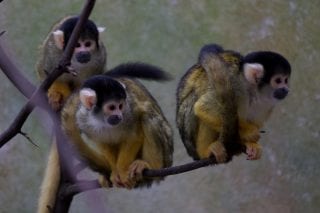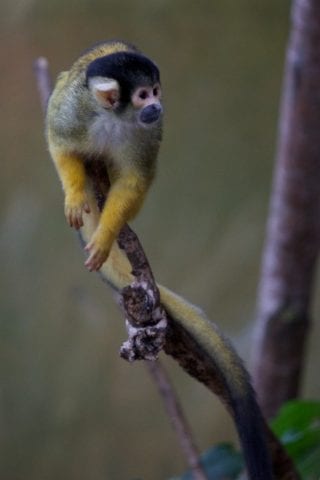Fun facts
Brain size
The brain mass to body mass ratio for squirrel monkeys is 1:17, which gives them the largest brain, proportionately, of all the primates.
Parental Care
Female squirrel monkeys are responsible for almost all infant care. In some squirrel monkey species, males vigorously protect infants from predators. However, with Bolivian squirrel monkeys, males are kept at the edge of the group and do not protect the infants.


